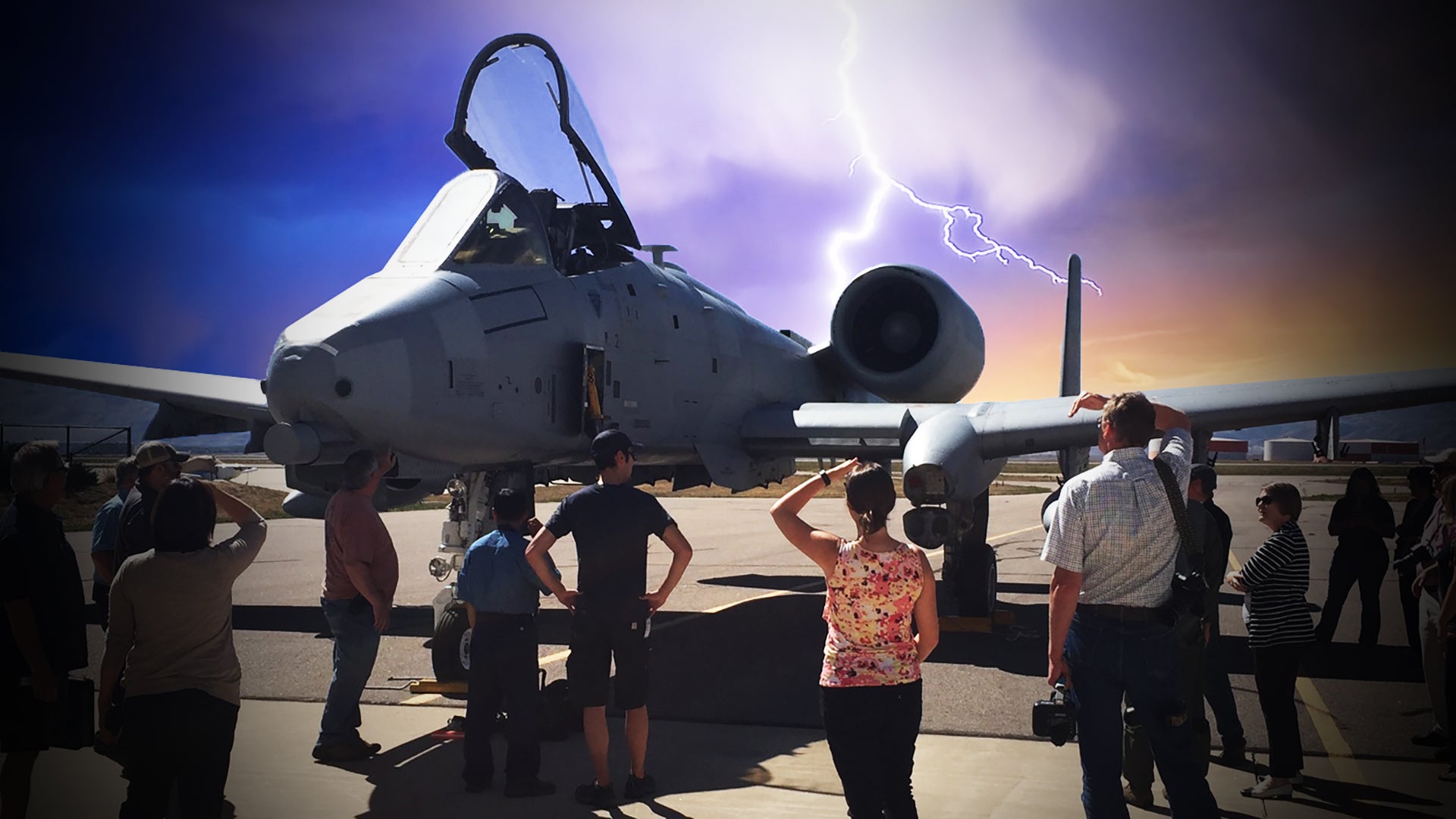By 2014, a somewhat obscure program to turn an A-10 Warthog into a storm chasing laboratory the likes of which the world had never seen before had begun to make headlines, and for good reason. I was just as excited as anyone to see the legendary tank-busting attack jet finally migrate to the civilian world in the name of science. The concept was so far-fetched sounding that even one of the nation’s most famous storm chasers couldn’t believe that the headlines—including ones I had written—were true. But they were indeed legit. Spurred by a $13M grant from the National Science Foundation, a menagerie of stakeholders was hard at work making their dreams of the ultimate storm penetrating flying machine a reality. It was all one heck of a story—that is until it wasn’t.
By the end of 2016, the whole project had evaporated from the public sphere without as much as a whimper. How could such an exciting, promising, important, and highly publicized project that was well along the path to being realized simply disappear? Last winter I set out to answer this exact question, here’s what I found out.
A Tough Act To Follow
What would become known internally as the SPA-10 Thunderhog was actually intended to be the successor of a humble yet remarkable aircraft whose decades-long job was to penetrate into some of the nastiest storms Mother Nature had to offer. Compared to the flying hurricane hunters that are so well covered by the mainstream media, this aircraft was far less glamorous, but also an incredibly important scientific tool, and far more robust.
The idea of building an airplane to study storms by penetrating through them, and especially those that feature heavy hail, dates back to shortly after World War II. For decades, it was thought of as an impossible proposition at worst and an extremely dangerous one at best. But by the mid-1960s, one man, in particular, was advancing the case for and plausibility of such an aircraft. That man was Paul MacCready.
With some money from the National Science Foundation, he and his associates executed a study on which aircraft from either military or civilian stocks would be the best fit for such a punishing mission. He first came to the conclusion that the WWII era famed Douglas SBD-2 Dauntless dive-bomber was the best fit, but when he factored in the cost of operation and sustainability, the North American T-28 Trojan trainer stood out above all other alternatives.
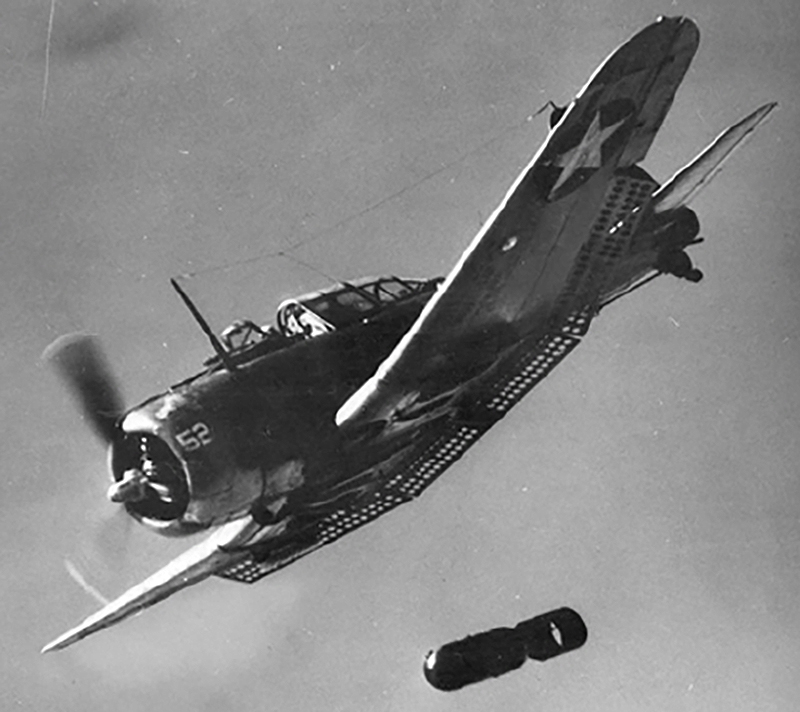
Regardless of the aircraft type, one factor was undeniable—no aircraft could survive high-speed impacts of three-inch size hail. The plane chosen would have to be heavily modified with armor and thus be able to lug its hardened self through gale-force winds and walls of flying ice. The slower the aircraft could safely fly, the less armor it would need, so high-speed was definitely not a high priority or even a benefit when choosing an airframe.
With the results of his study in hand, MacCready was granted funds by the Institute of Atmospheric Sciences’ NSF-funded Hailstorm Models Project to acquire the T-28 and modify it for storm research. Williams Aircraft Company spent over a year customizing the ex-Navy Trojan trainer. In the end, the work done to the aircraft was incredibly extensive. It was dressed with copious amounts of plating, its windscreen and canopy heavily modified, and its engine partially redesigned. You can read all about the work done to the one-of-a-kind flying machine here.

By 1969, the aircraft began busting through hailstorms at altitudes up to 23,000 feet and withstanding impacts of hailstones three inches in diameter hitting the plane at a combined speed of 225 mph. After being passed to the Institute of Atmospheric Sciences at the South Dakota School of Mines and Technology in latter 1969, the aircraft began taking on tougher and tougher storms. Some additional modifications were applied, including an enhanced wing spar and an upgraded radial engine to provide additional power.
Throughout the 1970s, the hail-proof plane made hundreds of runs through storm clouds reliably proving that the concept was viable and the science products it produced were highly valuable to better understand storms and the hail and other atmospheric effects they produced. The T-28 went on to fly missions into countless storms collecting all types of data.
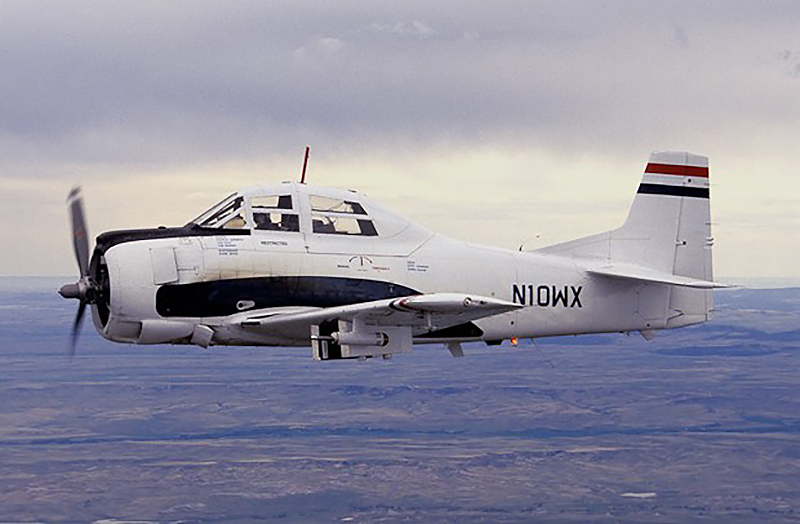
In 1987, the National Science Foundation and South Dakota School Of Mine Technology agreed to operate the aircraft cooperatively as the National Airborne Research Facility. Through the latter 1980s, 1990s, and up until being finally retired from service without replacement in 2005, the armored Trojan supported 18 major projects that focused on rain, hail, atmospheric electricity, detection of convective turbulence, cloud seeding in storms, and advanced radar data work.
Over the storm chasing T-28’s 35-year career, it had truly morphed into a multi-role flying meteorological laboratory. I don’t think anyone who brought the plane to life in 1968 would have believed it would still be doing important scientific research—literally providing potentially life-saving data—nearly 35 years after it was conceived. To think that it flew into the absolute worst conditions for an aircraft for all those years, being pummeled by hail and struck repeatedly by lightning (read about that here), yet it survived to be retired in good shape is really a testament to MacCready’s original vision.

There is a special section for the storm chasing T-28, registered N10WX, on the T-28 Trojan Foundation’s website. Part of a passage from pilot and meteorologist Tom Warner who flew the aircraft towards the end of its career reads:
It is important to point out that both Charlie and I felt that every time we penetrated storms, we reinforced the idea that a thunderstorm is no place for an airplane. No other plane in the world could survive in the environment we flew in, and it was only because of the armor plating (to withstand hail up to 3 inches in diameter), structural reinforcement and bulletproof canopy that enabled us to return safely each mission. Charlie used to say, “The aircraft knows how to get through a thunderstorm, you just have to stay with the aircraft.” For us, it was about keeping the right side up and the engine running. Some storms made this quite challenging.”
The T-28 was an amazingly useful aircraft but it was old—55 years of age at the time of its retirement with a whopping 2,000 in-storm hours in its logs—and it was limited as to the profiles it could fly and the loads it could carry, and thus it hit something of a plateau as to the new science it could provide. Even though saying goodbye to the Trojan was tough, those engaged in the project had their eyes set on a much more capable and modern storm penetrating machine that could build upon the N10WX’s stellar legacy.
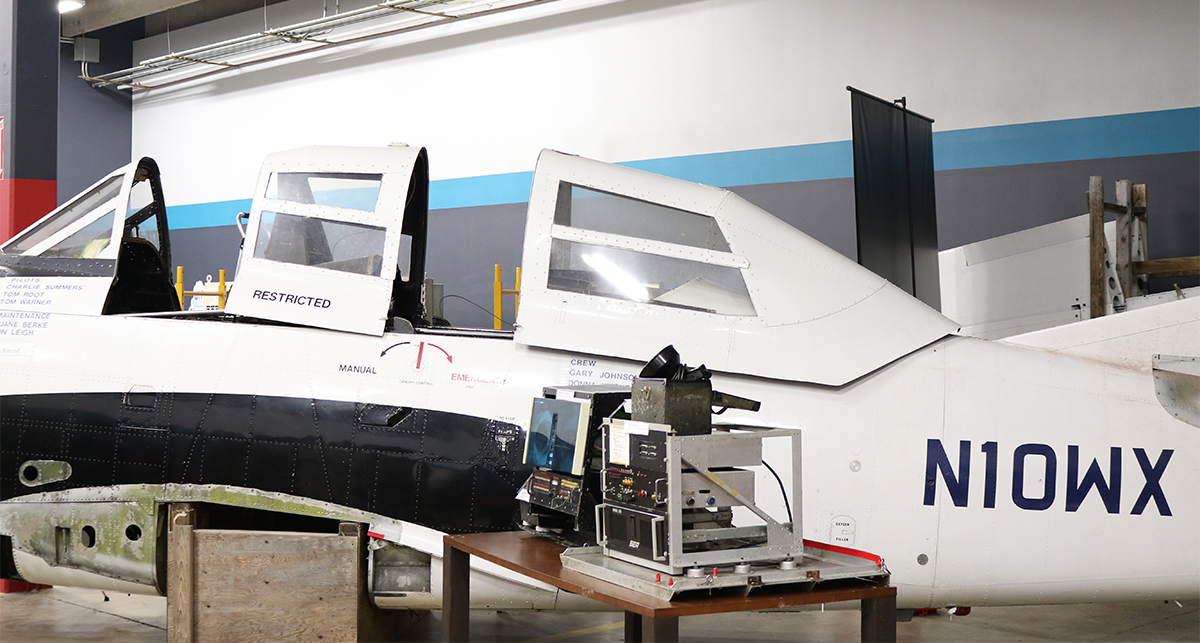
The Right Plane For The Job
The need for a more capable storm penetrating aircraft really dates back to the late 1980s and early 1990s. It was becoming clear that the Trojan had its limitations and new technologies could be put to work over a much wider flight envelope by a hardy aircraft with higher performance. By the late-1990s, the A-10 Thunderbolt was already being eyed for this exact role and the reasoning behind its final selection is abundantly clear. The same attributes that make the aircraft so effective on the battlefield would also make for an incredible storm penetrating scientific flying machine.
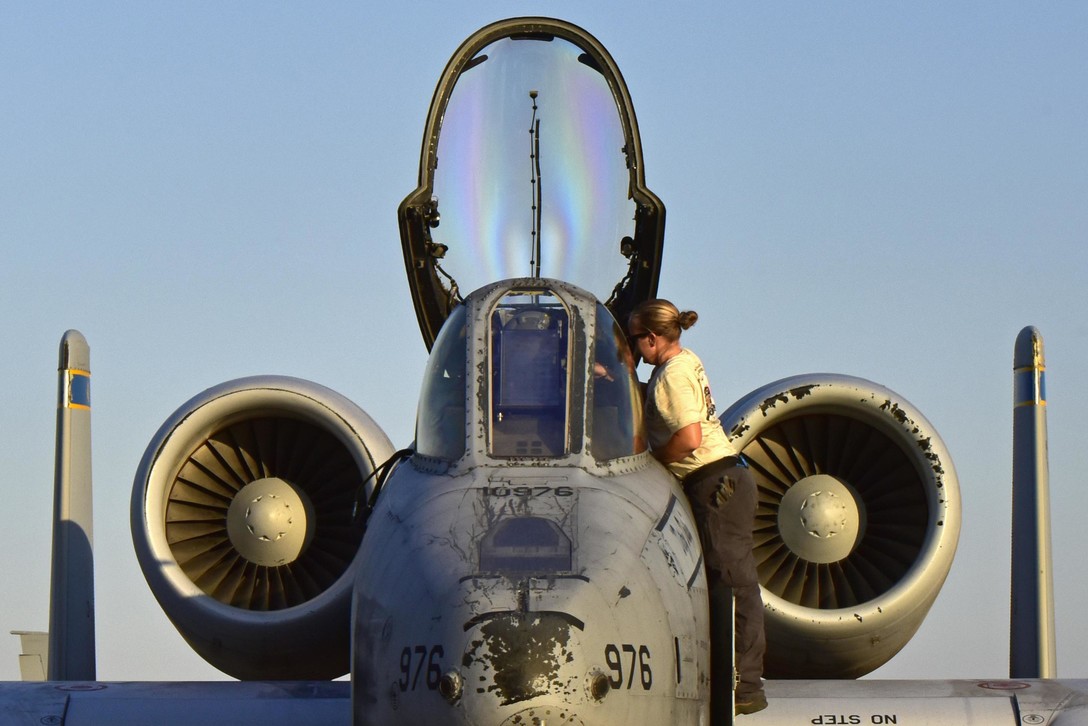
The Warthog was built to soak up hits from anti-aircraft artillery that would shatter other tactical jets. The aircraft’s honeycomb construction is designed to withstand strikes from small arms fire, shrapnel, and up to 23mm cannon fire. Critical parts of the jet, including the ‘titanium bathtub’ surrounding the cockpit, can withstand direct hits from 57mm anti-aircraft artillery shells. It also has redundant systems arranged on either side of the jet and its high-bypass turbofan engines are reliable, fuel efficient, and have a higher capacity to handle foreign object ingestions—like tennis ball sized hail. As a result, the armor modifications needed for an A-10 storm penetrating aircraft would be less extensive than the ones required on the T-28.
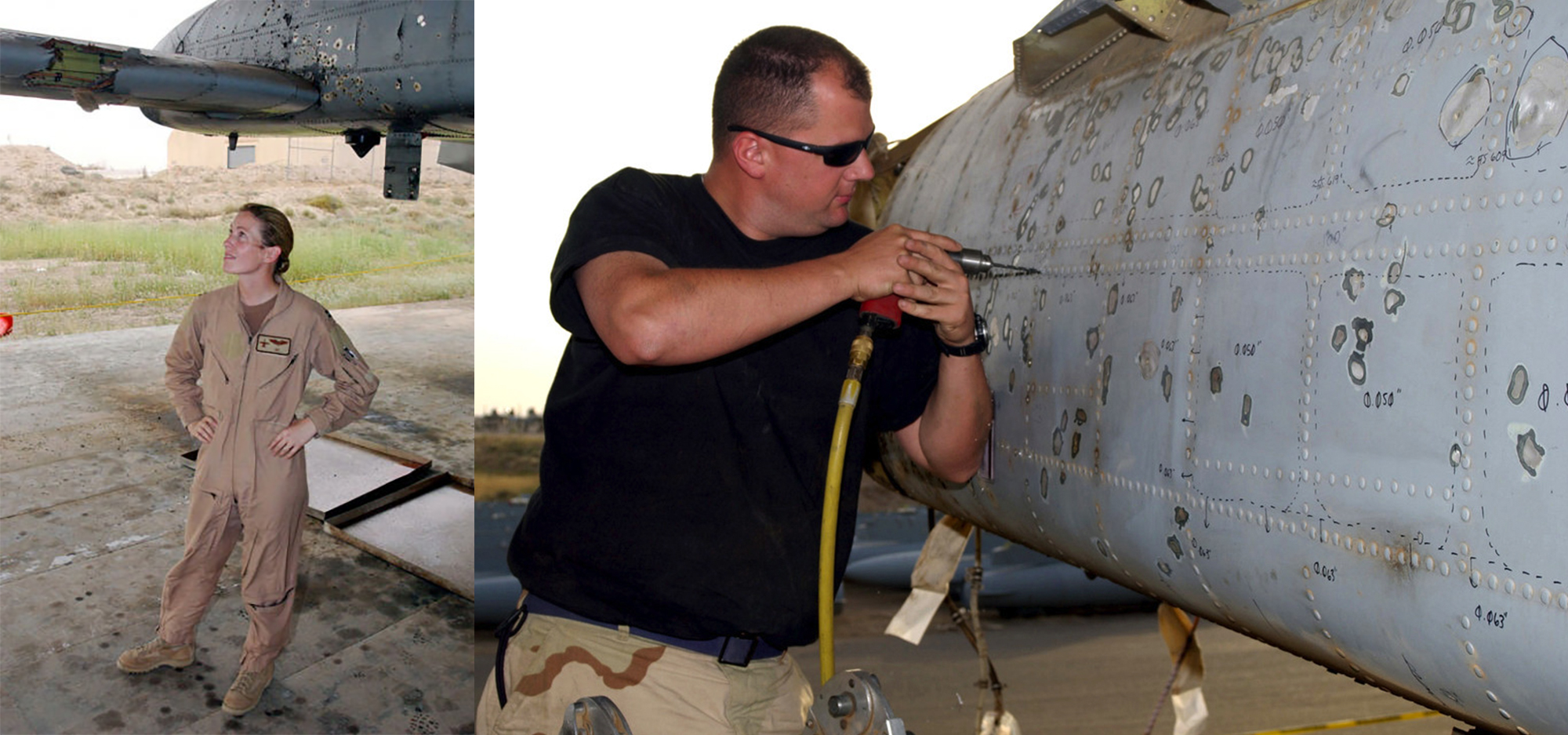
The A-10’s flight controls are relatively simple and its electronic components are shielded for operations in a nuclear environment—a good thing when it comes to withstanding lightning strikes. The rugged jet is also supportable by smaller ground crews operating in less than pristine conditions and can carry a wide variety of stores on its 11 hardpoints. The huge compartment for its massive gun, once removed, would provide ample interior space for mission-specific gear and the hydraulic drive system that spun the GAU-8 Avenger cannon could be adapted to generate large amounts of auxiliary electric power.
The A-10 was built with rapid repairability of battle damage in the field in mind. This could include replacing damaged panels and structures with new ones or literally filling holes punched in its skin. These attributes are ideal for a storm penetrating aircraft that would take some damage from hail and especially from lightning strikes.
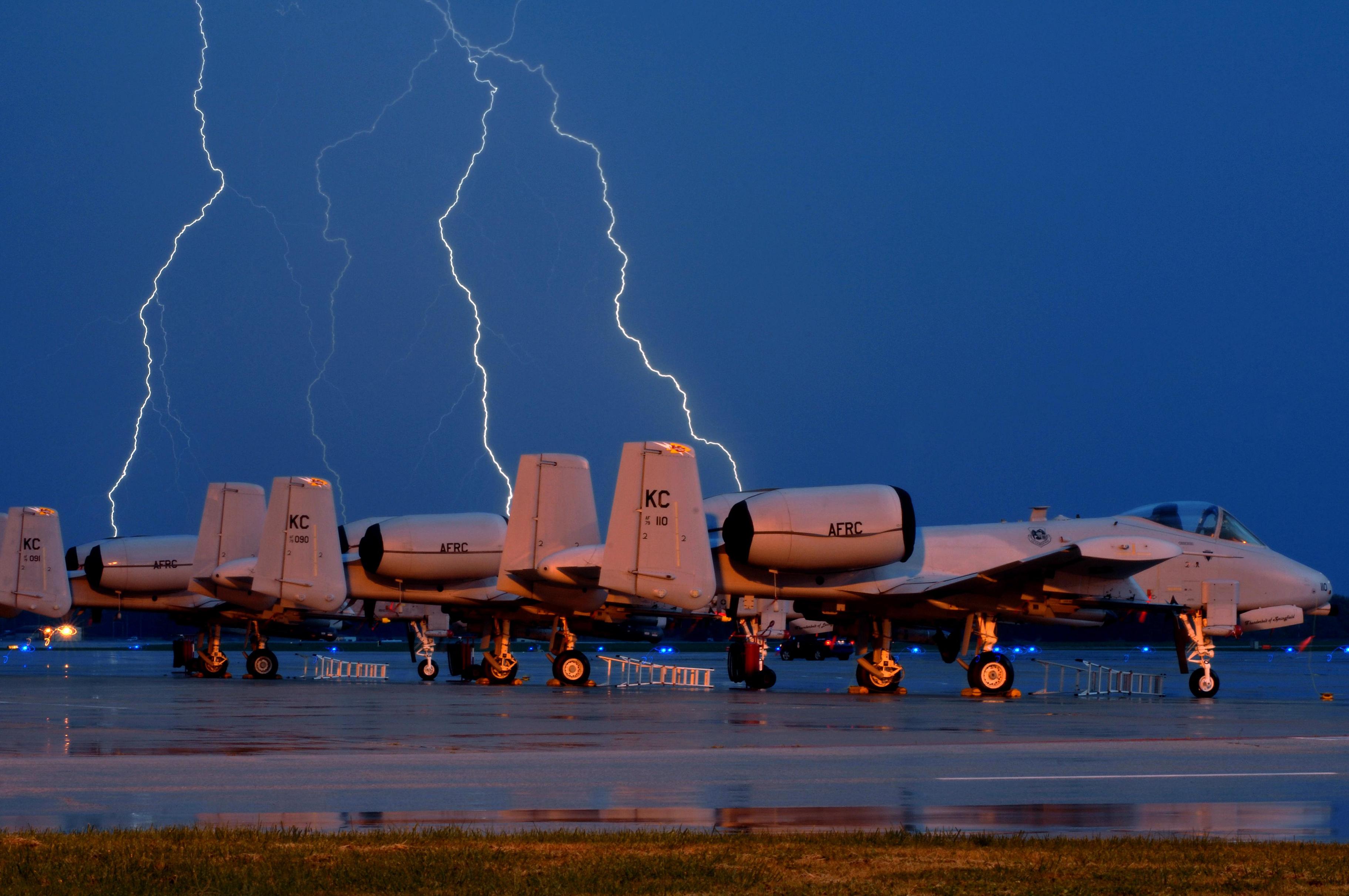
Its straight wings also meant that it could penetrate storms at slower speeds than its swept wing counterparts. At the same time, its ability to fly at much higher speeds when not flying into storms could be leveraged to do what the T-28 couldn’t—forward-deploy to distant locales or chase storms far from its base. But maybe most important of all is that the Warthog could fly at 35,000 feet—something its predecessor couldn’t come close to. This opens up new possibilities for important scientific research that has never been realized before.
Even expanding such an aircraft’s role to studying other extreme atmospheric conditions, like those that exist over forest fires, was a real possibility. But still, being able to study how rain, wind, hail, and lighting develop from inside a storm would be its primary and largely exclusive mission set.
Basically, the A-10 was better designed from the get-go to take on nasty storms than any other jet on the planet—but there would still be technical hurdles.
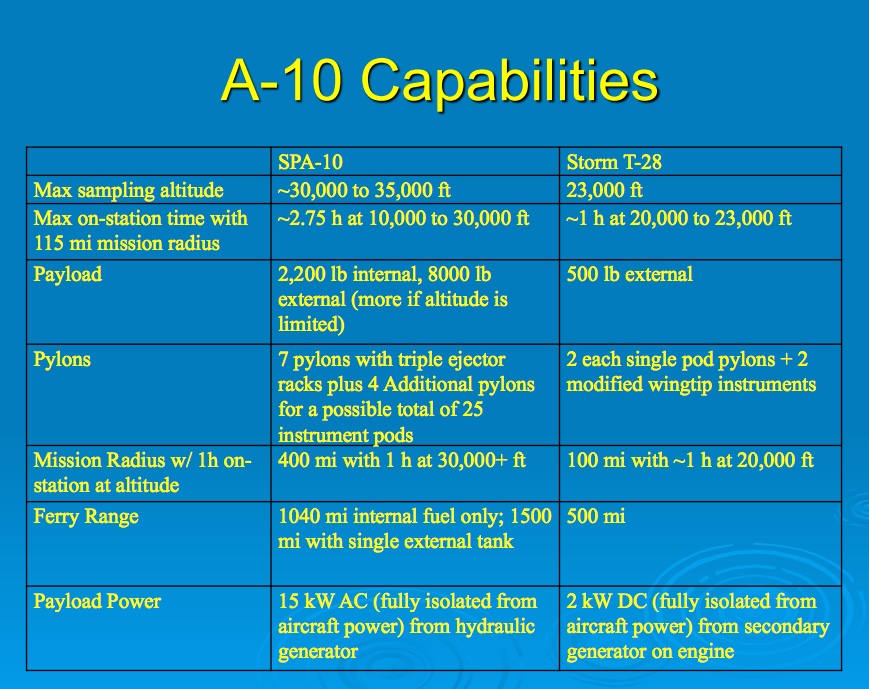
Birth Of The Thunderhog
After the Trojan was retired, the gap left when it came to a flying storm penetrating research facility was apparent and work to acquire an A-10 to take over the role began. You can read this entire case made for the project that dates back to 2006. By 2009, the Center for Interdisciplinary Remotely Piloted Aircraft Studies (CIRPAS) at the Naval Postgraduate School was granted an A-10 on loan from the USAF for the Storm Penetrating Aircraft (SPA) mission. In 2010, North Dakota School of Mines and Technology (NDSM&T) was selected by the National Science Foundation to work with CIRPAS cooperatively on the program. CIRPAS would help with operating the aircraft and managing the operational side of the program while NDSM&T of would work the science side of the program as it had with the T-28.
Everything was looking bright for the newly minted SPA-10 Thunderhog. A-10C serial number 80-0212, the 562nd A-10 ever built, was selected for the program and partially demilitarized by the USAF before being transferred to Zivko Aeronautics in Oklahoma City in late 2013. The plan was to have additional military systems removed and replaced with their commercial counterparts—including some of its avionics. The Warthog’s 20 foot long GAU-8 Avenger cannon was removed and the aircraft was rebalanced with added ballast. Then major mission-specific modification work and testing began.
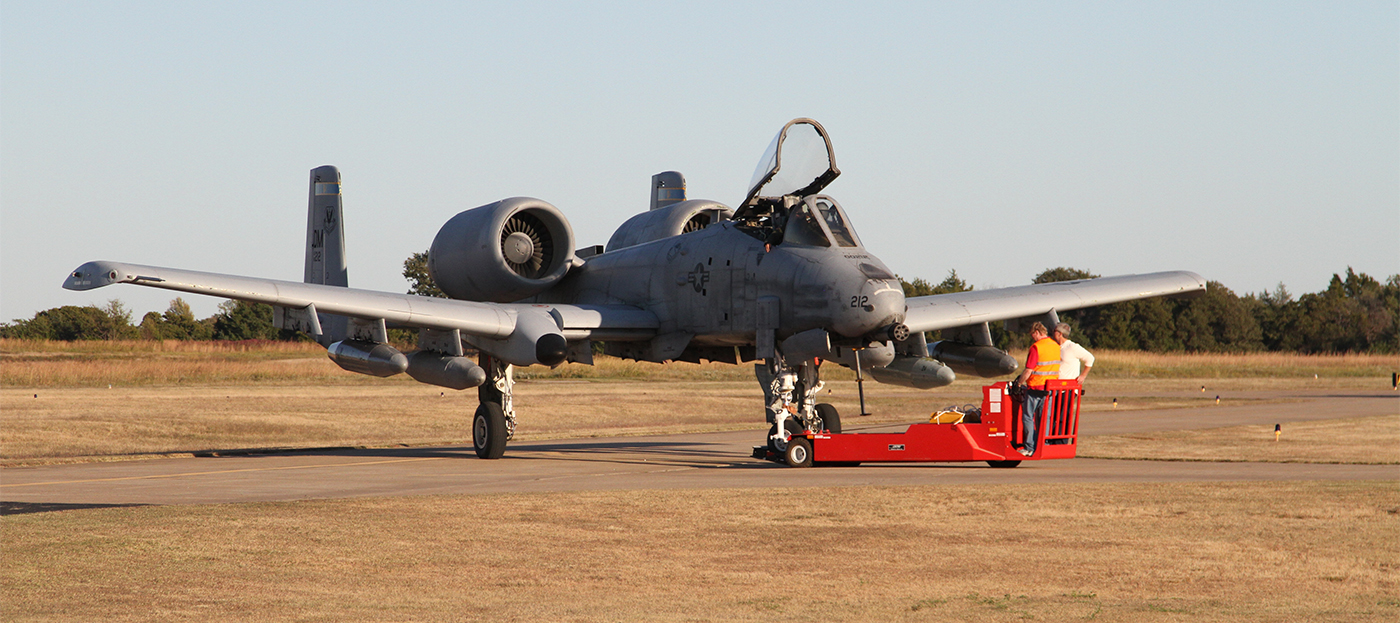
This would include the installation of anti-icing systems, additional lightning protection, and conversion of the gun bay to a partial mission equipment space with ample power generation by adapting the gun’s hydraulic drive unit. Wiring the aircraft for science payloads, onboard computers, line-of-sight and satellite data-link systems, and the addition of various instrumentation accommodations, including spaces for expendable sensors to be dropped into storms, were also to be part of the complex conversion process. Even the A-10’s muzzle protrusion was eyed as a place to mount a hardened sensor system.
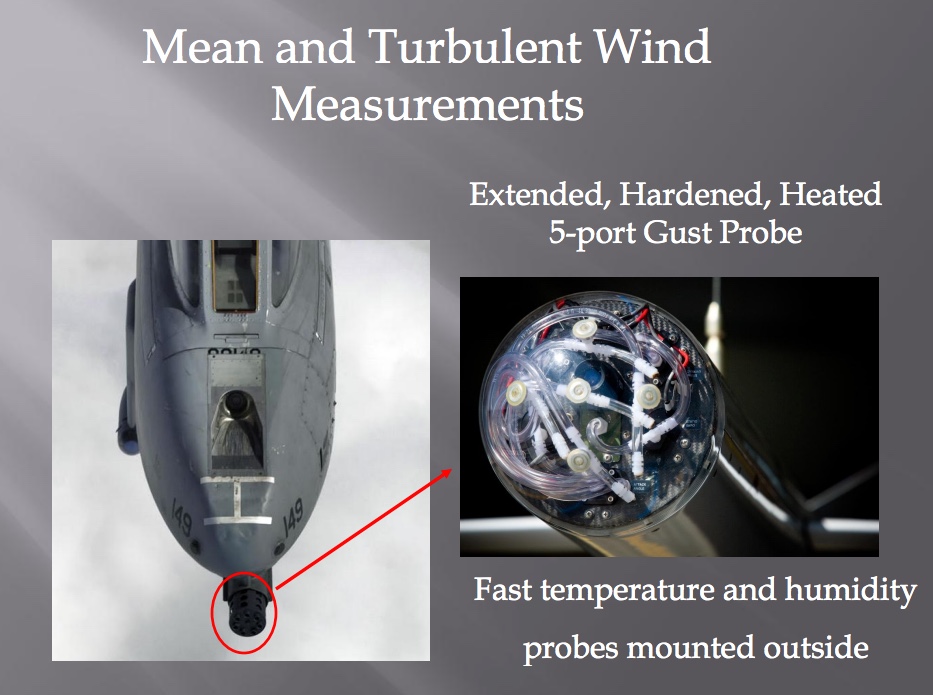
A number of carbon fiber scientific payload pods were also to be developed and would need to be tested. Even though the A-10 was notoriously rugged, hail was still a concern. The USAF provided spare wing leading edges for ice cannon testing to see if any additional armoring would be required. A number of smaller areas would need limited fortification as well. You can read a risk assessment for the modification program here.
As for who would fly the aircraft, the team wanted an A-10 Air National Guard pilot who would remain current on the aircraft through the Guard, saving the program a lot of money and complication in the process. You can read a complete powerpoint brief on the modifications intended for the aircraft as well as all the science it was slated to take part in here.
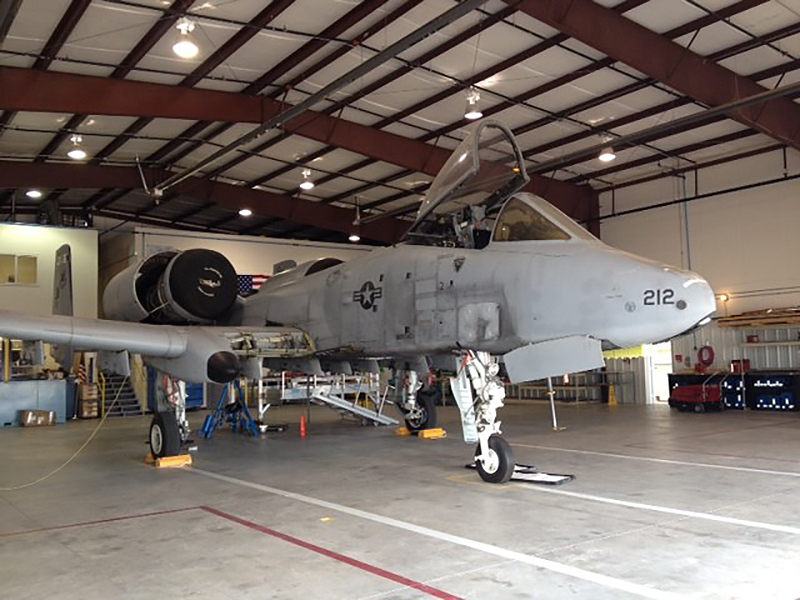
By 2014, the A-10 storm penetrator conversion process was moving along. The Naval Postgraduate School even began stockpiling spare A-10 parts in anticipation of operating the aircraft. Still, a lot of challenging modification work still lay ahead, but technical difficulties would soon become the least of the program’s worries.

Storm Clouds Gather
Originally, when the program was just beginning around the turn of the decade, it was thought that the conversion would be completed quickly, with the aircraft entering into flight testing around 2014-2015, but that wasn’t the case. In 2015, the timetable was pushed back at least two years and the program dragged on and cost soared as technical challenges persisted.
These included the need to fit the A-10’s inner wing sections with fixed ‘droop’ leading edges in place of its maneuvering slats. The issue was that ice could make it so the slats would not be able to activate. Also, without a deicing system on those leading edges, ice could accumulate and break off in huge chunks, flying right into the engines and causing major damage, or worse. The idea was that the inner leading edges could be replaced with a fixed, drooped leading edges and equipped with a deicing system. In effect, this would solve both issues.
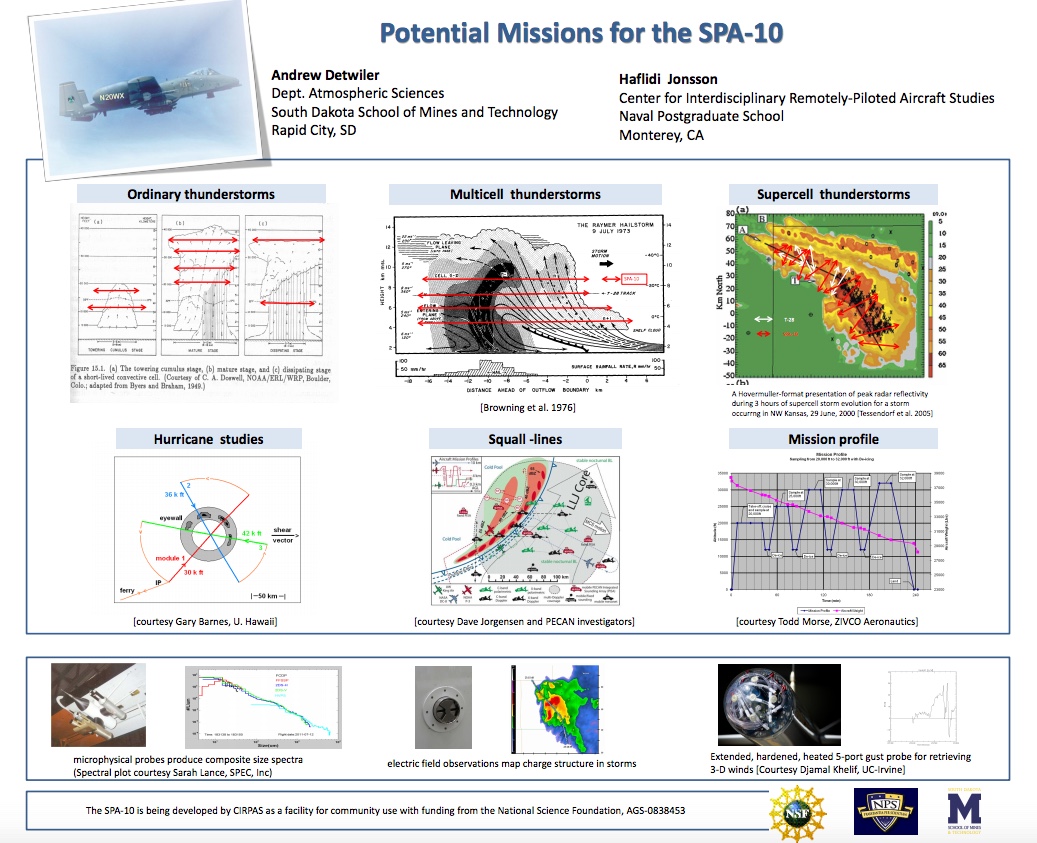
Apparently, the drooped leading edge modification had been studied before by the USAF, but getting it designed, installed, and flight tested was a complicated and expensive endeavor, especially considering it would be done for just one aircraft. Other problems persisted as well. Just getting clean, continuous power from a generator driven by the A-10’s hydraulic gun drive unit was a challenging undertaking. Eventually, this issue was solved though.
All of the storm penetrating A-10’s technical issues could be overcome, but doing so would take time and money—two things the program was increasingly running short of. And with a large portion of the required modifications still needing to be done, where additional money would come from was beginning to be a question of growing importance.

The biggest problem the program would face wasn’t technological, though. Instead, it had to do with how exactly the aircraft would be operated and how much it would actually cost to do so. With the original grant now looking woefully insufficient, the idea that the aircraft may have to be operated and maintained to the USAF’s standards was crushing. The issue was that nobody aside from the USAF had ever owned and operated an A-10, and especially a highly modified one that flies through storms. Getting everyone to agree on just how the aircraft would be maintained and flown became increasingly contentious and convoluted. But the aftermath of a number of cataclysmic shifts at the Naval Postgraduate School, including weathering an internal scandal among its leadership and major changes to how it managed cooperative research programs, would lead to the school dropping out of the program altogether. This served a crushing blow to the already troubled program.
With this major change to the program’s architecture, the issues with operating the A-10 would go from complex to nearly insurmountable. The Navy’s involvement was key in the USAF loaning the jet out for the mission in the first place. Under that regime, at least the DoD was still managing the program and the plane’s operation, to a certain degree. The question of who would, or even could, fill the Naval Postgraduate School’s shoes became an increasingly pressing and downright critical question.
By late 2016, the publicity around the program had evaporated. The once promising initiative that had fascinated many across the country had largely imploded. The aircraft, which was well along in its modification process, but still had a number of developmental hoops to leap through, was ferried from Oklahoma to Rocky Mountain Region Airport in Broomfield, Colorado and placed in the National Center for Atmospheric Research’s (NCAR) hangar there.
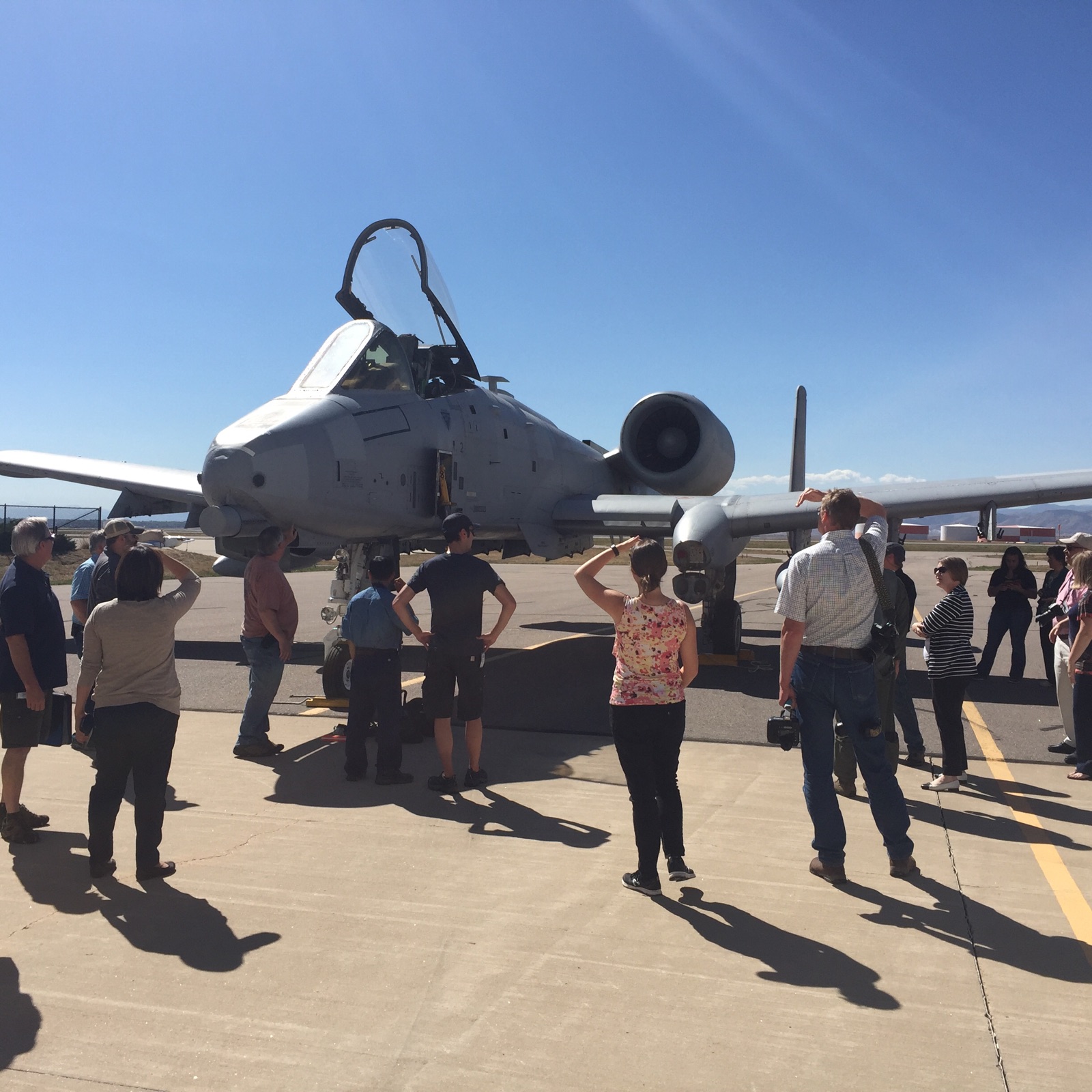
When the aircraft went into storage in late 2016, it was thought that the National Science Foundation would make a decision as to what to do with it within six to nine months. Nearly two years later, it has done nothing of the sort.
Flying Lab In Limbo
During my research, I reached out to the National Science Foundation for comment on the program. At first, they were less than forthcoming with information. Their initial response read:
The National Science Foundation supported the operation of a storm penetration aircraft (SPA) for about 30 years using a T-28 aircraft, owned by the South Dakota School of Mines and Technology, which was retired in 2004. The community need for this capability continues and was re-affirmed at a recent workshop focused on observations in convective and turbulent environments. Any aircraft used for such purpose must be modified for safe operation, including hardening of vulnerable surfaces, lightning protection and de-icing, and to carry scientific instrumentation, which entails development of a payload power system, air-to-ground communications, hardware to carry instrumentation, etc. It is anticipated that a future SPA would carry instrumentation to measure cloud and precipitation properties, storm electrification, and chemical composition. Once modifications such as these are complete, a future SPA would be made available to the scientific community for use in studying cloud and storm environments, including severe thunderstorms and hurricanes, to address unanswered questions about the development, evolution and impacts of severe weather.
The National Science Foundation (NSF) is considering options to meet the scientific and safety requirements for an operational SPA. The considerations include cost to achieve readiness as well as a good understanding of operational costs needed to meet the scientific goals. Among the options under consideration is use of an A-10 aircraft on loan from the US Air Force. NSF expects the process of aircraft modification, airworthiness testing and operator identification to be such that it will be several years before the SPA reaches operational readiness.
After pushing back on this bizarre answer, which made it sound like the SPA-10 was still just an idea and not an airplane sitting idle in a hangar in Colorado, here was their reply:
The National Science Foundation (NSF) started this project with The Naval Postgraduate School (NPS) operated by the United States Navy. A commitment of $13 million dollars was provided to NPS for the modification of an aircraft, specifically an A-10 model, to render it an effective storm penetrating aircraft. This type of modification had never been done before.
During the course of the project, after making progress, NPS made a determination that it could no longer participate in the project due to internal grant policies. At that point, NSF had a better understanding of the full scope, including associated costs needed to complete the project.
Informed with this new information, NSF believes the prudent course of action is to initiate an analysis of the situation, and reassess the scientific goals and associated costs of meeting those goals. Any future funding would be subject to clearance by the Office of Management and Budget and Congress.
I checked with a number of sources, including airport operations in Broomfield, and the half-finished SPA-10 Thunderhog is still sitting in the NCAR’s hangar to this very day. Supposedly, it gets occasional engine runs to keep the aircraft from degrading to the point where flying it again would be highly problematic and very costly.
The entire endeavor is clearly a boondoggle, but really, it shouldn’t be. We are talking about critical science here that saves lives and prevents major damage, especially to aircraft, including those owned by the USAF. Storms, and especially hail, do millions of dollars in damage to USAF and other service’s aircraft and property every year.
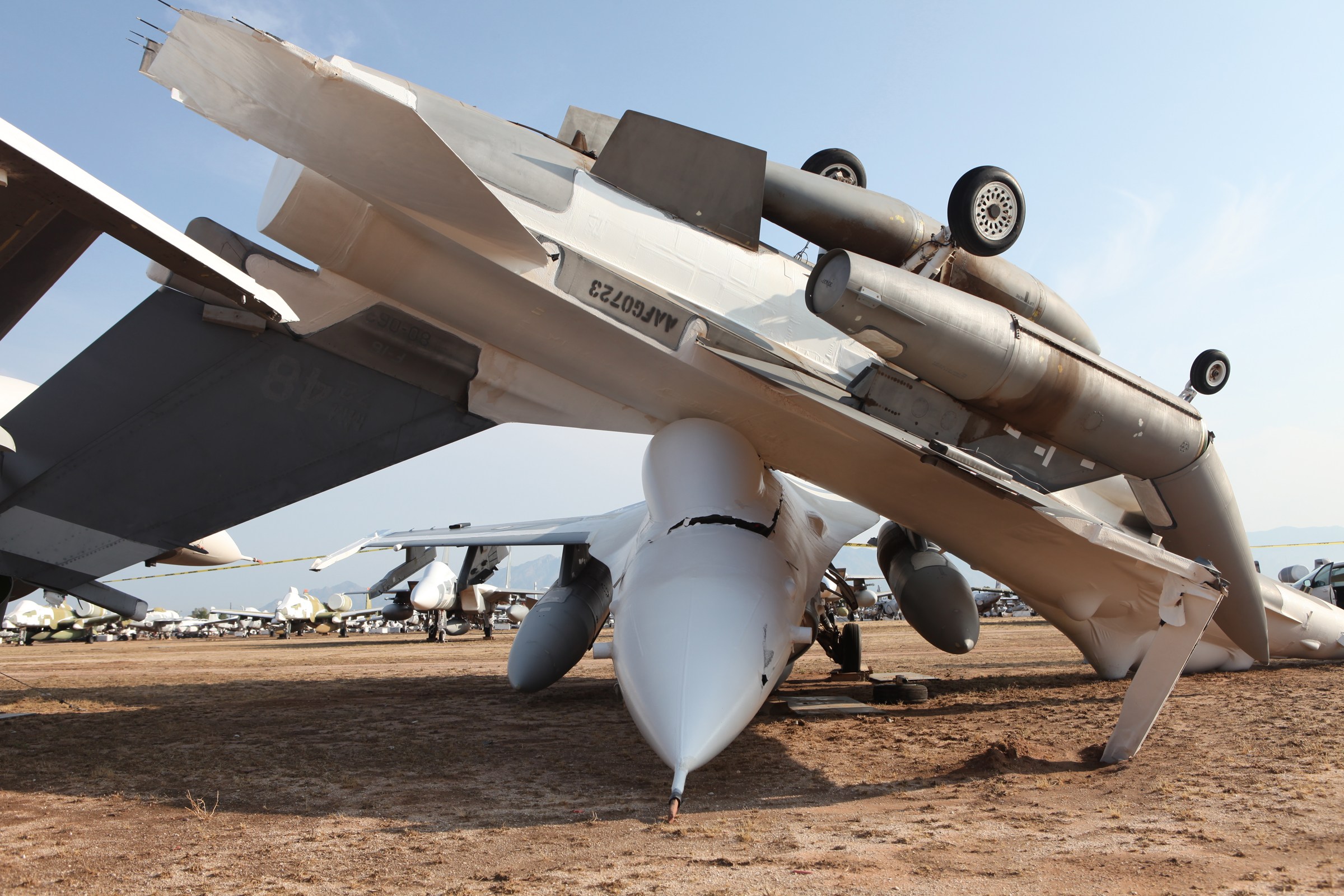
The problem of who operates this aircraft and how could be solved by the USAF taking on the mission instead of just being on hand to provide operational and engineering advice. Considering the federal government already blew many millions of dollars on the airplane and there is a highly experienced and proven team at NDSM&T that can accelerate the science, finishing the aircraft and putting it work is money very wisely spent.
The very idea that such an important laboratory needs to be created by cobbling together a team on shoestring funding is sad in itself. But this is science that really does impact the USAF’s mission. Surely there is room in a $716B defense budget to at least chip in substantially to see that the SPA-10 gets to execute its mission for the greater good? By having the USAF fly and maintain the aircraft it would solve so many problems, and maybe then the NSF could focus on funding the science side of the program exclusively.
The bottom line here is that SPA-10 wasn’t a bad idea. It just ran into major execution hurdles and was underfunded from the get-go. This can be fixed. But until then, the fate of Thunderhog remains uncertain at best and downright dismal at worst. According to our sources, some of the remnants of the SPA-10 team recently traveled to Hill AFB to discuss the jet’s future with the new head of USAF’s A-10 systems program office. The exact results of that engagement remain unclear, but it seems more to do with keeping the USAF from repossessing the aircraft than from getting the program funded and back on track.
And there definitely is still a need. A scientific workshop that occurred in Boulder, Colorado in May of 2017 and sponsored by the National Science Foundation, Atmospheric and Geospace Sciences, and the National Center for Atmospheric Research resulted in a final report titled “Requirements for In Situ and Remote Sensing Capabilities in Convective and Turbulent Environments.” It concluded the following:
“The instrumentation of a storm-penetrating manned aircraft that can withstand severe turbulence, hail, and lightning strikes is greatly desired by investigators studying continental convection, including severe storms. Such an aircraft would allow measurement of turbulence, 3D wind, trace gases, aerosol, the electric field, and thermodynamic and cloud physical variables along its flight path. A manned aircraft is currently the only reliable way of making such measurements. A US Air Force A-10 aircraft is currently being evaluated by NSF for this role. The need for extensive aircraft modifications without Supplemental Type Certificates, and the lack of other A-10s for civilian use, make this an expensive and high-risk project, but the stakes are high for those studying severe convection.”
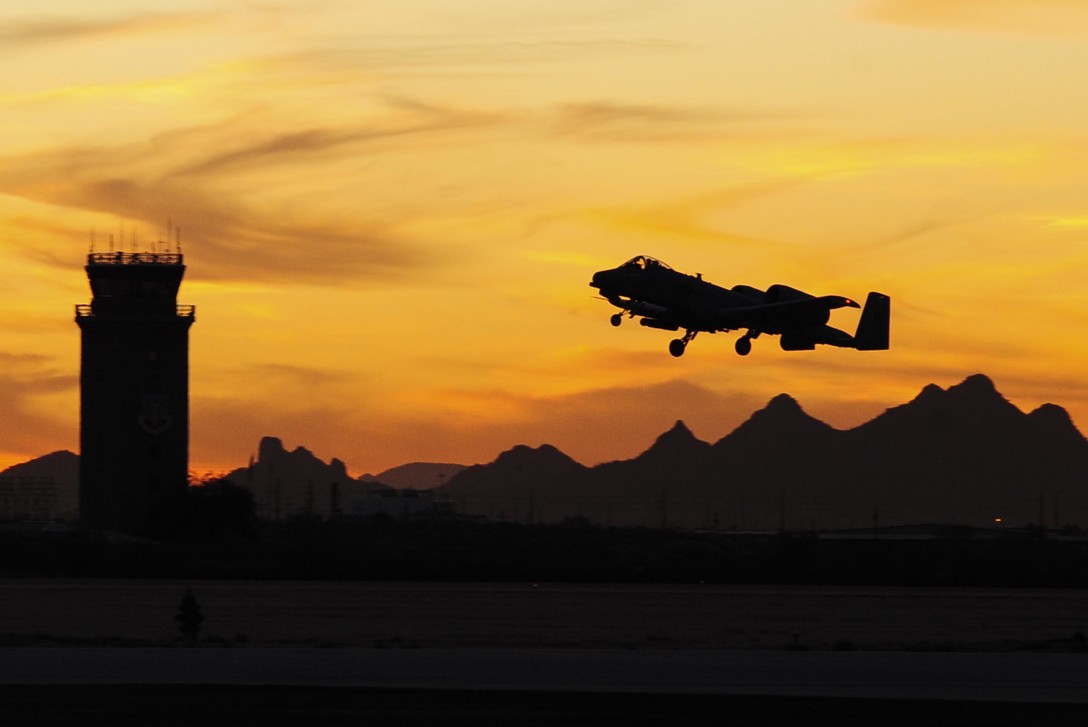
Andrew Detwiler, who recently retired from his position as a professor of physics at the South Dakota School of Mines and who was a lead player on the SPA-10 program and someone The War Zone spoke with extensively while developing this story, summed up why the Thunderhog is so important while speaking to Oklahoma City’s News9 back in 2015:
“The idea is to get something into a storm to see things that you can’t see from outside the storm using radar… We’re doing it so we can understand more about how hail develops in a storm, how lightning develops, how tornadoes develop, all the different things that these storms contain… You need something inside the storm to actually close the gap and understand it completely.”
As it sits now, that gap hangs wide open for the meteorological science community and if nobody steps in to save the Thunderhog there is little chance that it will ever be closed in the foreseeable future.
Author’s Note: A very special thanks to Andrew Detwiler, previously of the South Dakota School of Mines and Technology, and Haflidi Johnson, of the Naval Postgraduate School, for taking the time to discuss the SPA-10 program with us as part of the research that was done to develop this story.
Contact the author: Tyler@thedrive.com
